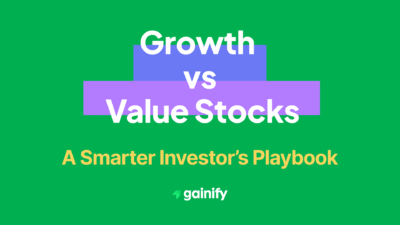When it comes to retirement planning, few decisions are more important than choosing where to invest your savings. For most individuals, the goal is twofold: to protect capital and to generate reliable income. Achieving both outcomes in today’s unpredictable markets requires more than selecting well-known stocks. It calls for a carefully structured and diversified investment strategy built around long-term priorities.
The best retirement stocks are not just about popularity or momentum. They are often dividend-paying companies with solid financial foundations, consistent earnings, and a long history of performance across economic cycles. These tend to include blue-chip stocks in sectors like consumer staples, healthcare, and utilities. Their ability to generate income and provide steady growth makes them ideal for investors planning for retirement.
A well-constructed retirement portfolio usually includes more than individual stocks. Mutual funds, exchange-traded funds (ETFs), and bond funds all play essential roles in creating a balanced portfolio. These options help reduce exposure to market volatility while offering income generation and the potential for capital appreciation over time.
Many retirement plans also rely on Social Security as a foundational income source. Layering this with stock dividends, bond income, and other conservative investments allows retirees to better match their income to their living expenses. When all components work together, the result is a portfolio built to withstand market shifts and provide reliable income throughout retirement.
In this article, we will explore the top sectors for retirement investing, highlight specific stock selections, offer practical portfolio-building tips, and provide a balanced look at both conventional and contrarian retirement strategies. Whether you are building your plan or refining it, this guide will help you make informed choices that support lasting financial security.
What Makes a Stock Retirement-Friendly?
The ideal retirement portfolio prioritizes income stability, risk management, and sustainable growth. Equities play a central role in this structure, especially when selected with long-term investing goals in mind. Financial planners and investment professionals consistently emphasize a set of core characteristics when identifying retirement-friendly stocks:
- Consistent Dividend Payments: Dividend-paying stocks, particularly well-established “blue-chip” companies, are essential for income generation in retirement. Their history of reliable payouts supports consistent cash flow, helping to cover monthly expenses and offset inflation over time.
- Strong Financials: High-quality companies should demonstrate robust financial health, including strong balance sheets, reliable earnings, and healthy cash flow. These businesses also tend to engage in shareholder-friendly practices such as disciplined capital spending and responsible share buybacks, which contribute to long-term value.
- Defensive Sector Exposure: Sectors such as consumer staples, healthcare, and utilities are less sensitive to economic cycles. Companies in these areas often maintain stable revenues and dividend distributions, making them dependable anchors in a diversified retirement portfolio.
- Reasonable Valuations: Avoid overpaying for growth or momentum. Even strong companies can become risky if their stock prices significantly outpace underlying fundamentals. Valuation discipline helps reduce exposure to unnecessary downside risk.
- Low Volatility: Equities with lower price fluctuations tend to improve portfolio stability. These holdings can help protect capital during market declines and deliver more predictable annual returns.
When integrated thoughtfully, these types of equities help align an investment portfolio with essential retirement objectives, including stable income, risk-adjusted returns, and resilience through various market conditions. This approach supports a long-term strategy focused on financial security and sustainable wealth.
Examples of Retirement Stocks by Sector
Below is a sector-based overview of companies that are commonly considered retirement-friendly. These businesses not only offer reliable dividend payments and strong fundamentals, but also provide broad exposure to key segments of the U.S. economy, making them valuable additions to a diversified retirement portfolio.
Consumer Staples
- Procter & Gamble (PG): A dividend-paying company with predictable earnings and global brand strength.
- Coca-Cola (KO): A top choice for dividend-oriented investors, thanks to its consistency and international presence.
Healthcare
- Johnson & Johnson (JNJ): A cornerstone of stable dividend stocks with a strong dividend aristocrat list record.
- AbbVie (ABBV): High cash generation and strong dividend growth make it attractive for income generation.
Utilities
- NextEra Energy (NEE): A consistent performer in renewables with a dividend focus.
- Duke Energy (DUK): Reliable payouts and steady growth – ideal for conservative investment.
Real Estate (REITs)
- Realty Income (O): Known for monthly dividends and long-term real estate returns.
- Public Storage (PSA): A defensive REIT that fits well into any diversified portfolio.
Mature Technology
- Microsoft (MSFT): Combines capital appreciation with growing dividends.
- Apple (AAPL): Solid financials, share buybacks, and dividend growth position it well.
These companies support both active investing in individual stock positions and passive investing via dividend yield ETFs.
Creating the Ideal Retirement Portfolio
To achieve consistent returns and manage risk, a diversified approach is essential. An ideal retirement portfolio may include:
- Dividend-paying stocks and dividend-focused ETFs.
- High-dividend yield funds for income generation, but not the high-dividend yield ones that lack stability.
- Bond ladders using government bonds and certificates of deposit for interest income.
- REITs and alternative investments for additional diversification.
- T-bills to dividend stocks for a safer yield.
- Cash investments or high-yield savings accounts to manage short-term needs.
Sample Allocation for Illustrative Purposes:
- 35% dividend-paying stocks
- 25% bond funds and government bonds
- 15% international stocks
- 10% REITs
- 10% cash or CDs
- 5% speculative investing or class C shares with potential upside
Ensure each investment aligns with your risk tolerance, marginal capital, and financial goals. Bundles of investments reduce unsystematic risk while maintaining exposure to broader markets.
Key Considerations: Risks and Retirement Strategy
Sequence Risk
Sequence risk refers to the danger of experiencing negative investment returns early in retirement. These early losses can significantly reduce the longevity of a portfolio because withdrawals compound losses and leave less capital to rebound. To help reduce this risk, retirees can incorporate a mix of stable dividend stocks and reliable bond income. These assets typically show less volatility and can buffer portfolio value when equity markets are down.
Strategy in Retirement
Choosing a withdrawal strategy is critical. Whether you rely on automatic withdrawals, dividend-focused strategies, or a mix of both, your portfolio should be aligned with your living expenses, risk tolerance, and income needs. It can be helpful to separate essential expenses from discretionary or fun money expenses to ensure that core needs are met without unnecessary drawdowns.
Expense Awareness
Over decades, even small fees can erode your total returns. Pay close attention to expense ratios, minimum commissions, and up-front commissions. Favoring low-cost index ETFs and mutual funds can result in more savings and better long-term outcomes. A difference of just 0.5 percent annually can lead to tens of thousands of dollars over a 30 to 40 year period.
Tax Efficiency
Proper tax planning can significantly increase after-tax returns. Use tax-sheltered accounts such as Roth IRAs or other non-taxable accounts for income-generating assets. Avoid placing high-dividend yield funds in taxable brokerage accounts unless part of a larger tax-managed plan. This can minimize the impact of the income tax rate on your retirement savings and help extend the life of your portfolio.
Withdrawal Phase Planning
As you enter the withdrawal phase of retirement, you must carefully manage the order and size of your withdrawals to reduce tax liability and preserve capital. Blending returns from capital appreciation, stock dividend income, and bond income can help maintain income generation while managing portfolio risk. Diversifying income sources also ensures you’re not forced to sell stocks at a loss during market downturns.
Contrarian Perspectives
1. Too Much Diversification?
Some heretical dividend investors argue that holding a basket of stocks dilutes performance. If you’re comfortable with profitable risks, a focused portfolio of high-quality companies may outperform.
2. Dividend Aristocrats vs. Growth?
While dividend aristocrats offer consistency, some advanced investors opt for higher-risk small-cap stocks or high-growth stocks for capital appreciation, especially when stock prices are depressed during a stock crash.
3. Blue-Chips vs. Active Management?
Even with well-known companies, understanding the difference between stocks with high dividend yields and sustainable payouts is essential. But not the high-dividend yield ones that mask poor fundamentals.
Final Thoughts
The best retirement stocks form the foundation of financial security, income generation, and long-term investing success. Whether you’re focused on stock dividend income, capital appreciation, or return of capital, constructing a diversified portfolio with a clear return focus is essential.
Invest with companies that align with your values, offer stable annual returns, and adapt well during stock market rallies or equity bear markets. Understand the magnitude of risk you’re comfortable with and build your strategy accordingly. Work with a professional investment team when needed, and use tools like the Morningstar Uncertainty Rating to assess investment risk.
Ultimately, retirement investing is about peace of mind. With a smart strategy, consistent review, and the right mix of income-producing and growth-oriented assets, your portfolio can deliver the financial resources you need for a comfortable retirement.
Q&A: Building a Smarter Retirement Portfolio
Q: What types of dividend stocks should I prioritize?
A: Look for blue-chips with strong cash generation, stable dividend stocks with consistent dividend strategies. Companies on the dividend aristocrat list offer reliability.
Q: Should I include tech stocks or small-cap stocks?
A: Yes, but keep them in moderation. Use them to complement stable holdings, not as core components.
Q: How do I prepare for inflation periods?
A: Diversify into real assets, dividend-paying stocks, and inflation-resistant equities like EOG Resources.
Q: Are ETFs better than mutual funds?
A: ETFs offer lower expense ratios and broader access to hundreds of companies. Mutual funds may offer active management but can come with higher fees.
Q: Should I work with a financial planner?
A: Yes. A financial planner helps match your investment objectives to your income for retirement, balancing risk and return.




